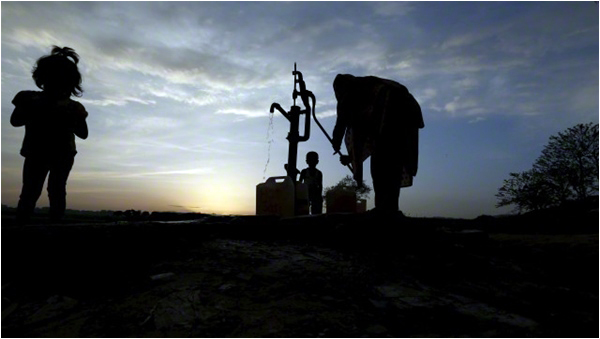
The poor quality of drinking water in Pakistan is a well-documented fact. But what are the consequences of drinking fresh water available from polluted sources? Thousands of children in Pakistan die each year from diarrhea after drinking polluted water. Cases of diarrhea are experienced in the poorest neighbourhoods in Islamabad to the remotest villages in Sindh. Over two-thirds of households in Pakistan drink water that is contaminated by bacteria. This is arguably one of the most substantive problems facing Pakistan – and one of the most ignored ones. With the bulk of public spending remaining committed to infrastructure building, military spending and debt repayment, improving the quality of water drastically is not a priority. Now an eye-opening report by the Pakistan Council of Research in Water Resources has revealed that 20 sources of drinking water across the country have high levels of toxicity making it unfit to drink. A total of 29 sources in as many cities were tested and nearly two-thirds of the tested samples were not potable. A high level of arsenic makes water injurious to health, but unsuspecting people have been consuming such water. In addition to arsenic, brain-eating amoeba and fluoride are also widespread in water sources. The tests also found an excessive ratio of iron in some samples. This is a serious health hazard.
Though all tiers of government are responsible with varying degrees of accountability, perhaps the onus lies the most with the district and provincial governments. The responsible departments must initiate a purification drive in all such contaminated sources of water before the toxicity level reaches even more dangerous proportions. The country’s industrial waste is another cause of concern as in nearly all major industrial and trading estates, toxic waste management is of poor quality. Adding to this is an extremely poor sewage system across the country especially in urban areas. The urbanization process in Pakistan has been largely unplanned and without master plans that incorporate a proper disposal of contaminants and effluent. Seepage of toxic effluent into groundwater endangers people’s lives and causes water-borne diseases. All provinces must approve and implement water policies, making it mandatory to check water quality across all provinces at least on a yearly basis. Governments at all tiers must develop strategies for proper disposal procedures. Not even a small volume of water should be released into canals, lakes, rivers, and into the sea without treatment. Chlorination and distillation are two of the most affordable and useful methods for eliminating – or at least reducing – the level of contamination in water. Filtration and reverse osmosis are also tested and tried methods that the governments must employ. With the availability of multiple methods for water purification there remains no excuse for any delay and the authorities must act now.
The provision of clean water is part of the Sustainable Development Goals (SDGs) and should be considered a part of the fundamental constitutional right to life. In the absence of clean drinking water, the right to life itself lies compromised. The country’s poor water infrastructure is in dire need of reform. The rich have moved to bottled water while the poor continue to consume untreated water. But the crisis is not just limited to the quality of water supply. The water supply in the country is in itself continuing to dwindle, and the country could face absolute water scarcity not that far into the future. That we are failing to address this does not need to be substantiated. The creaking irrigation network has not been updated and continues to remain a key reason for water wastage. But the trouble is that the relevant storage capacity does not exist if water were to be diverted from agriculture. Water is an issue that needs the full attention of policy makers. This is not the case right now.
Published in The News on 24th August 2021

